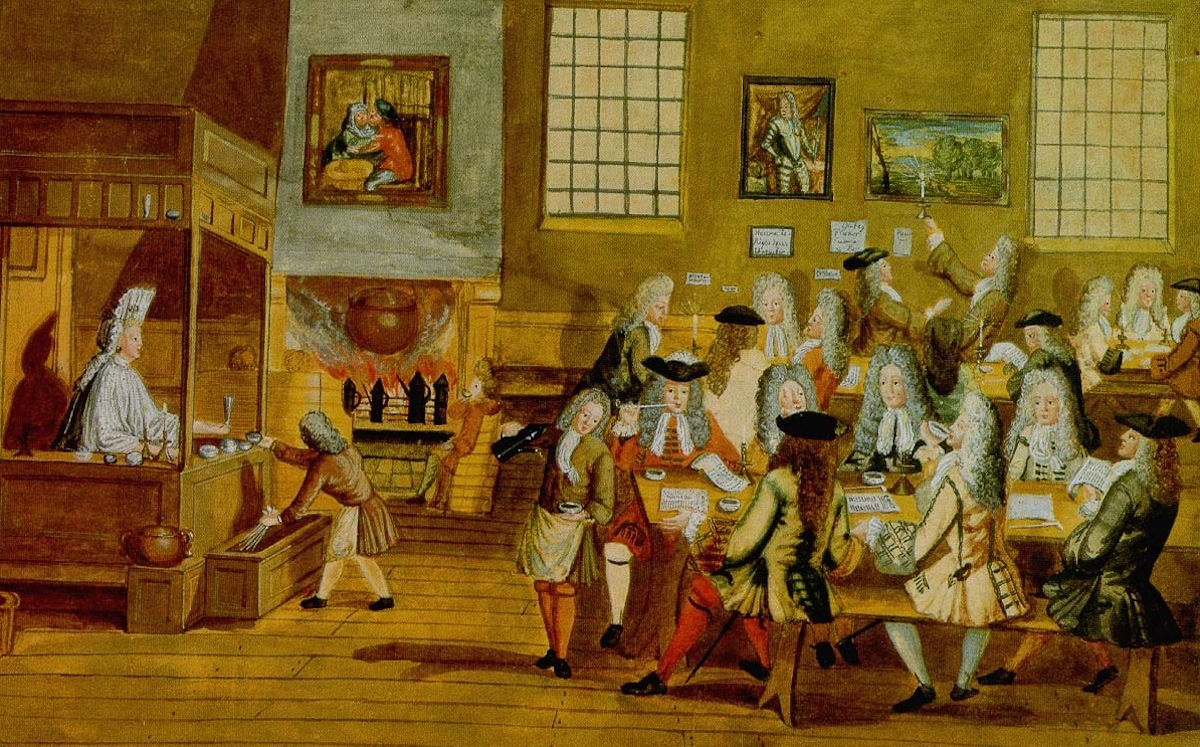The first coffee house appeared in 1650 and they became major forces in learning.
Coffee houses, as forums for debate and discussion, played an important part in the general diffusion of knowledge and ideas (Kelly 1970: 82). The first is said to have appeared in Oxford in 1650 and the second in London in 1652. By the turn of the century there were over 2000 in London alone. As Ellis (1956) puts it, ‘Every trade and every profession had… its favourite meeting place. Sometimes coffee houses were used for more formal educational activities such as lectures, more commonly they provided a base for clubs and societies – including debating clubs. The first of these is supposed to have been based at Mile’s Coffee House, at the sign of the Turk’s Head in New Palace Yard in 1659.
William Lovett noted that around a quarter of the 2000 London coffee houses had libraries – some of which had as many as 2000 volumes. Coffee Houses also, traditionally, supplied newspapers for customers to read.
Old Slaughter’s Coffee House, 77 and later at 74-75 St Martin’s Lane WC1 . The original Slaughters was established in 1692. It was demolished in 1843 to make way for Cranbourn Street – rather appropriately it would be situated between the Pret A Manger and the Spaghetti House).
Slaughters has several claims to fame. It attracted many artists including Hogarth and Roubiliac; it was a lively house for discussion – Goldsmith wrote in 1765 ‘If a man be passionate he may vent his rage among the old orators at Slaughter’s Chop Shop and damn the nation because it keeps him from starving’ (Weinreb and Hibbert 1983: 561); and it played host to the inaugural meeting of the Royal Society for the Prevention of Cruelty to Animals in 1824.
References
Ellis, A. (1956) The Penny Universities. A history of the coffee-houses, London: Secker and Warburg
Kelly, T. (1970) A History of Adult Education in Great Britain. From the Middle Ages to the Twentieth Century, Liverpool: University of Liverpool Press.
Lillywhite, B. (1965) London Coffee Houses. A reference book of coffee houses of the seventeenth, eighteenth and nineteenth centuries, London: George Allen and Unwin.
Weinreb, B. and Hibbert, C. (1983) The London encyclopedia, London: Macmillan.
Picture: Interior of a_London Coffeehouse, 17th century – Wikimedia Commons pd
© Mark K. Smith 1997
